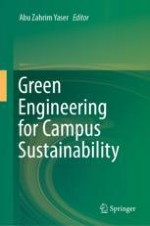2020 | OriginalPaper | Buchkapitel
The Feasibility of Using Palm Oil Ash in the Mix Design of Interlocking Compressed Brick
verfasst von : Hidayati Asrah, Nadiah Sabana, Abdul Karim Mirasa, Nurmin Bolong, Lim Chung Han
Erschienen in: Green Engineering for Campus Sustainability
Verlag: Springer Singapore
Aktivieren Sie unsere intelligente Suche, um passende Fachinhalte oder Patente zu finden.
Wählen Sie Textabschnitte aus um mit Künstlicher Intelligenz passenden Patente zu finden. powered by
Markieren Sie Textabschnitte, um KI-gestützt weitere passende Inhalte zu finden. powered by
